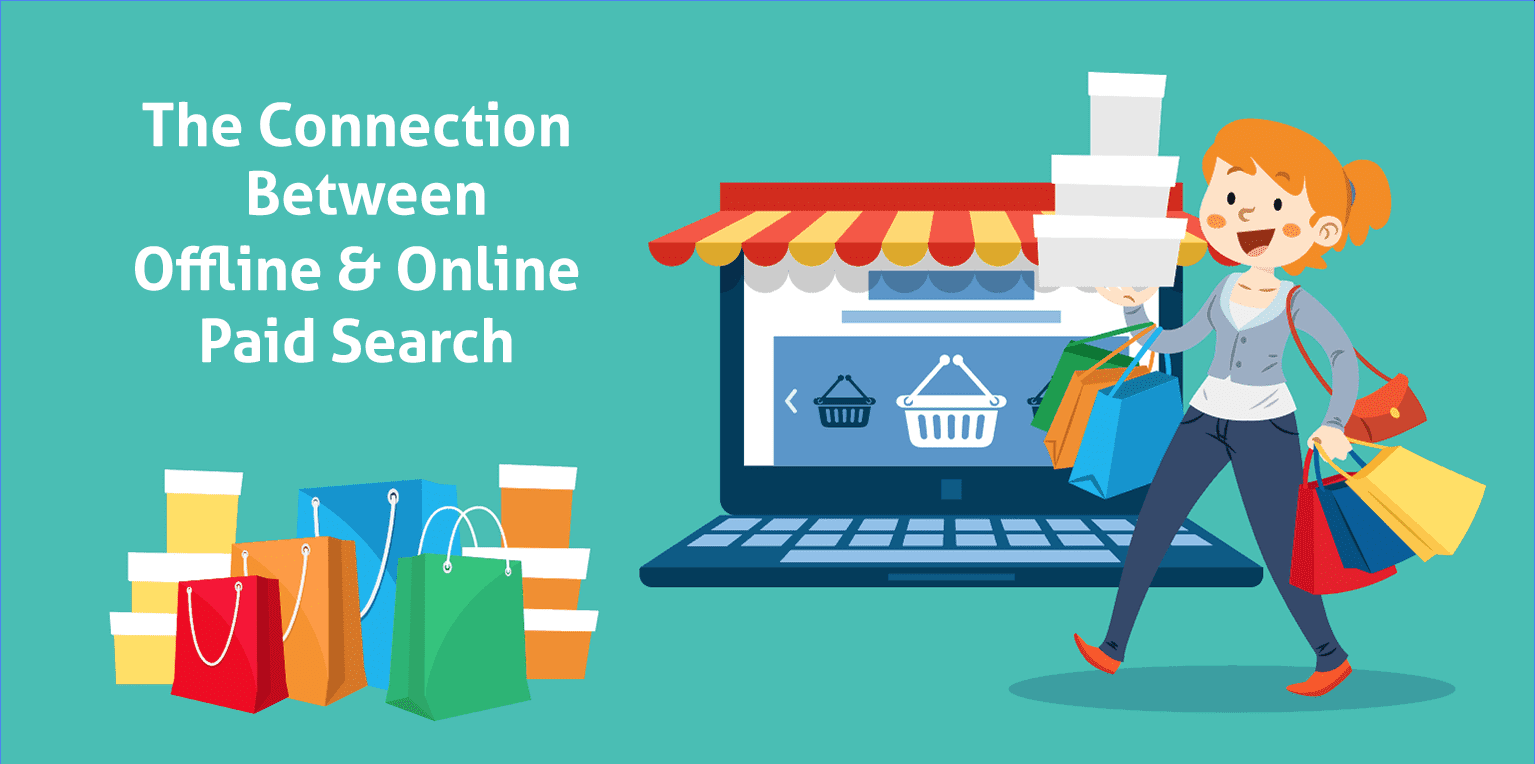As consumer spending habits shift — the Internet will account for 10 percent of all retail sales in the United States in 2017 — brands are blending conventional and digital marketing methods to boost revenue.
Online and offline sales have traditionally been seen as separate: Retail and Web customers are considered two very different beasts that move through distinct sales funnels. However, savvy marketers are targeting both of these consumer segments with paid search marketing campaigns that deliver lucrative returns. Here’s how paid search targets online and offline prospects.
1. Online Paid Search Accelerates Offline Spending
Paid search ads bolster incremental offline sales, according to Applied Predictive Technologies, who studied 13 multichannel retailers in the United States.
Consumers who visit an online store through a search engine (a huge 82 percent of all paid search ad spend in the United States comes from Google) can research products and services and make a purchase from a brick-and-mortar store at a later stage in the sales cycle. “Webrooming” — when consumers browse online and then buy in a retail store — has skyrocketed, with 89 percent of customers wanting to shop for products in a way that’s comfortable for them, regardless of the sales channel.
2. Display and Paid Search Convergence Targets Online and Offline Prospects
Paid search has taken inspiration from display advertising in recent years. In 2013, Google launched Remarketing Lists for Search Ads, based on traditional retargeting, a long-standing display advertising technique where ads are targeted to customers based on their previous interactions with a website. The service lets you tailor keyword bids to different segments of your customer base, optimizing your search campaigns. You can reach consumers who frequently buy products online and engage “offline” customers, who are less likely to make a purchase from your site.
3. Paid Search Metrics Measure Cross-Channel Conversions
Google has metrics that track in-store conversions associated with paid clicks, something that provides you with insights on your cross-channel campaigns. You can even upload offline conversions to Google AdWords to find which keywords result in the biggest sales.
There are two ways to gauge returns: AdWords Conversion Import for Salesforce lets you monitor leads and sales data if you use Salesforce’s Sales Cloud product, while AdWords Conversion Import enables you to track conversions from other platforms.
4. Facebook Ads Interest Online and Offline Customers
Facebook Ads is a powerful marketing platform that can be combined with your paid search campaign. The social network generated a 19 percent conversion increase among consumers who saw an ad on the platform. In addition, there was a 10 percent decrease, on average, in cost per acquisition among leads who experienced Facebook ads in conjunction with paid search ads.
If you’re planning a multichannel campaign that targets online and offline customers, Facebook Ads can help. You can use the platform to increase the visibility of your brand among offline targets who saw your ad in traditional media like TV and newspapers and encourage them to visit your online store. Facebook ad campaigns could also increase offline enrollments by 12 percent.
Whether you are trying to reach online or offline customers, paid search provides you with a hefty return on your investment. This marketing technique lets you expose your brand to consumers and increase sales across various channels. Combine paid search with display advertising and Facebook ads for an even more comprehensive campaign.
